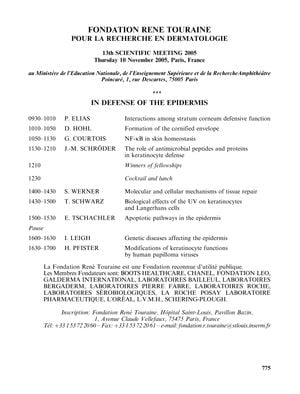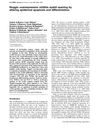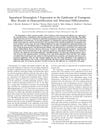Formation of the Cornified Envelope
September 2005
in “
Experimental dermatology
”
cornified envelope epidermis keratinocytes involucrin loricrin small proline-rich proteins transglutaminases TG1 TG3 TG5 desmosomes lamellar granules lamellar ichthyosis Peeling Skin Syndrome ceramides tight junctions p63 Klf4 Nrf2 CE skin barrier skin cells TGs LGs skin disorders skin integrity oxidative stress response

TLDR The cornified envelope is crucial for skin's barrier function and involves key proteins and genetic factors.
The formation of the cornified envelope (CE) in the epidermis was essential for skin's barrier function, involving the transformation of keratinocytes and the integration of key proteins like involucrin, loricrin, and small proline-rich proteins, cross-linked by transglutaminases (TGs) 1, 3, and 5. Desmosomes and lamellar granules (LGs) played crucial roles in CE formation and barrier maintenance. Mutations in TG1 and TG5 were linked to skin disorders such as lamellar ichthyosis and Peeling Skin Syndrome. The study highlighted the complex interplay of proteins, lipids, and genetic factors in maintaining skin integrity, with significant roles for ceramides, tight junctions, and transcription factors like p63, Klf4, and Nrf2 in epidermal differentiation and response to oxidative stress.

